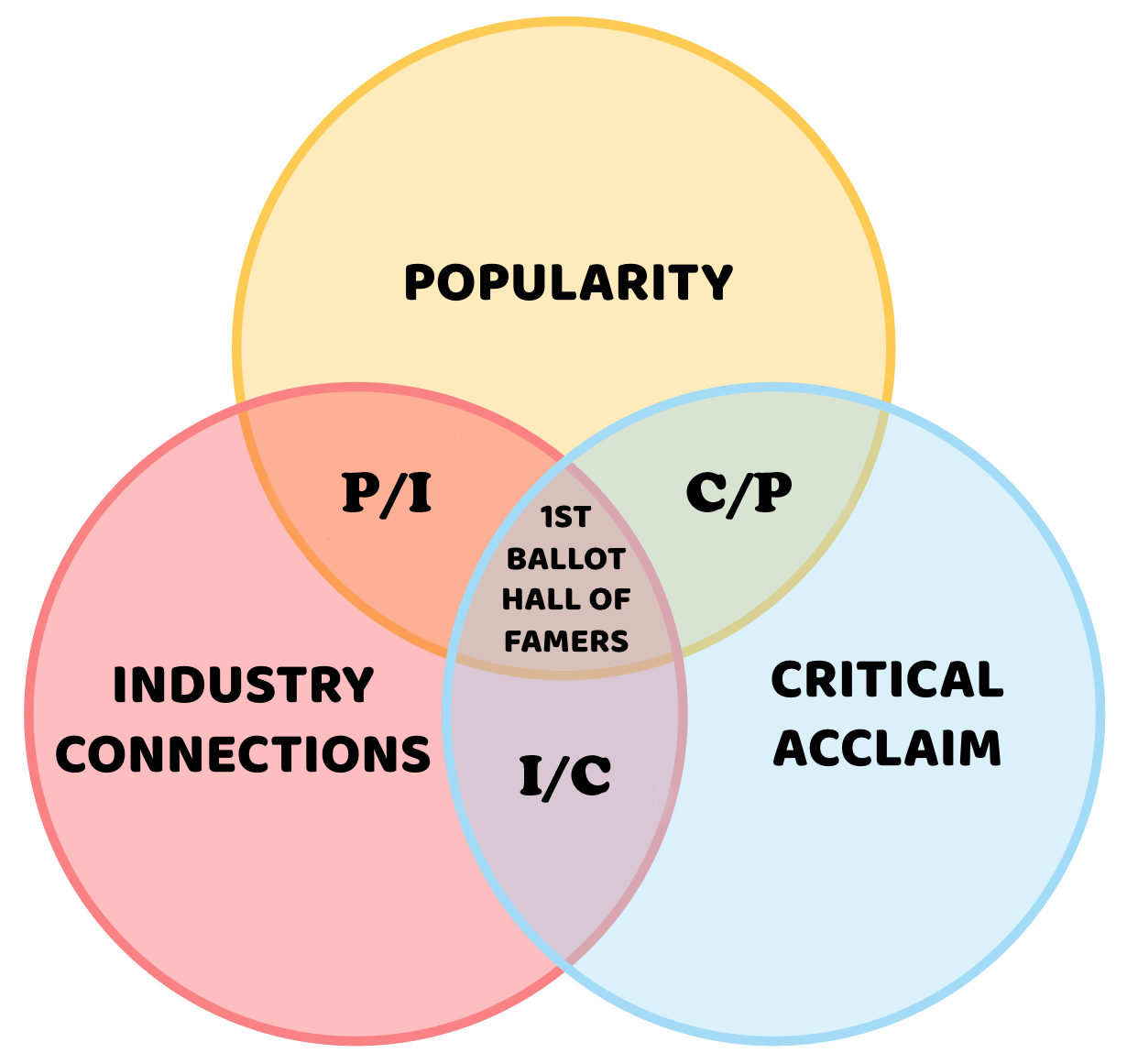Uncovering the Next Generation's Hall of Fame

The Rock Hall's Balancing Act
Looking at the wide array of 246 performer inductees and comparing it to the long list of those who aren't in, it's possible to draw some general conclusions about what it takes to get into the Rock & Roll Hall of Fame. The Hall doesn't list any official criteria, but the three primary traits of performer inductees tend to fall into these broad categories:
- Popularity
- Critical Acclaim
- Industry Connections
History has shown that artists who do well in at least two out of the three categories have a solid chance at making the Hall of Fame, and those who check all three boxes likely get in on the first ballot. This is why having massive record sales and radio hits (aka "Popularity") on their own isn't typically enough to break through (e.g. Huey Lewis & the News, Styx, Backstreet Boys, etc.), while the same is true of Critically Acclaimed artists who never fully entered the mainstream (e.g. Can, Hüsker Dü, PJ Harvey). The Industry Connections category can take many shapes, such as having your record executive or manager on the Rock Hall Nominating Committee, but it can broadly be thought of as artists who often show up at awards shows or special events, and play the showbiz game (e.g. John Legend, Alicia Keys, Green Day, Gary Clark, Jr.). Having those industry relationships is often the missing piece of the puzzle that helps separate artists from their musical peers in the eyes of the Hall of Fame.
It should be noted here that there are dozens of artists who satisfy two or three of these categories that aren't in the Hall of Fame yet, but should be considered qualified.

It wasn't long ago that the Rock & Roll Hall of Fame was criticized for being self-centered and run by elitist critics when it would repeatedly nominate artists like Patti Smith or The Stooges while ignoring (or outright disparaging) populist artists like KISS or Chicago. While there was unquestionably an element of truth to that reputation, the overall list of inductees was fairly balanced between popular and critical favorites.
Over the last decade, there has been a noticeable shift in the Rock Hall's stance towards critically maligned but popular artists, as more and more famous snubs finally broke through with a nomination and then were quickly inducted.
Continuing that trend, take a look at the performers nominated in 2022 and how they best fit in the diagram above (bold artists were inducted):
- C/P/I (1st Ballot): Eminem
- P/I: Lionel Richie, Eurythmics, Carly Simon, Dolly Parton*, Duran Duran
- I/C: Beck
- C/P: A Tribe Called Quest, Judas Priest, Rage Against the Machine
- P only: Pat Benatar, Dionne Warwick
- C only: Devo, Kate Bush, Fela Kuti, MC5, New York Dolls
* - Dolly is critically acclaimed in Country music circles, but generally not considered by the Pop/Rock critics, which are relevant here.
The only common denominator among the winners is Popularity. When evaluating such a musically diverse ballot, voters heavily gravitated towards the most iconic names, most of whom are deeply entrenched in the music industry. Any artist without household name recognition, a significant Billboard chart presence, or couldn't plausibly appear at the American Music Awards were passed over again.
To be fair, the Nominating Committee has tried to create well-balanced ballots, but it has become incredibly predictable to see that the Voting Committee now favors shiny stars over influential pioneers. The Rock Hall's "solution" to this problem is to use their special categories to induct handpick a few artists who can't get past the voters (like Judas Priest, Kraftwerk and LL Cool J), rather than addressing the systemic deficiencies in their ballot construction or voter demographics.
While some may see lack of balance unsettling, those in charge at the Rock Hall and HBO (its induction ceremony broadcast partner) almost certainly see this populist direction as a feature rather than a bug (especially with their new interest in the superstars of Country to choose from). Now that the precedent has been set for the amount of star power expected on stage at induction ceremonies, there's no turning back now.